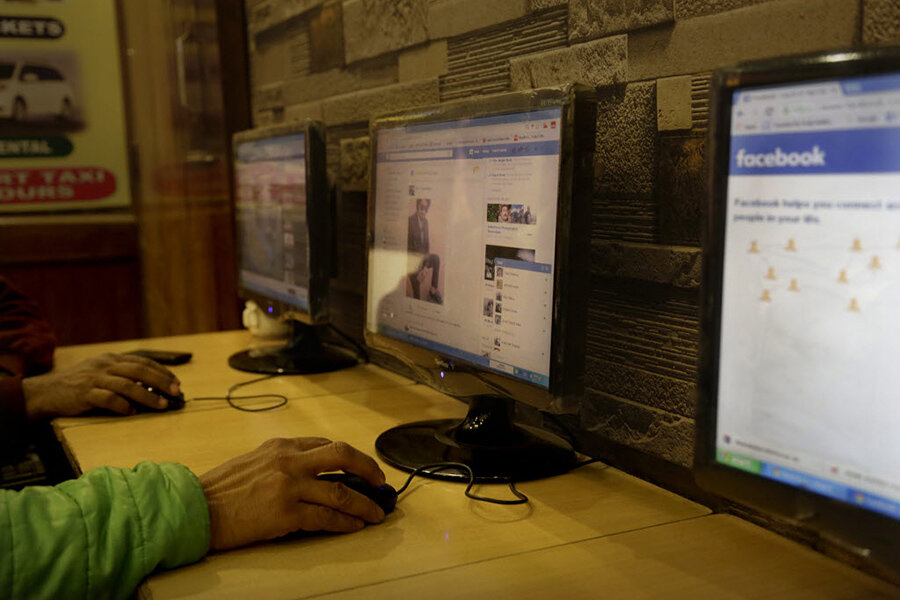India hustles to no longer have slowest Internet speed in Asia-Pacific
Loading...
India appears set to overtake the US to become the world’s second largest Internet market, but its users face the slowest average connection speeds measured in the Asia-Pacific region, a new report finds.
Internet users in India — an expected 462 million people by June 2016 — experienced an average speed of 2.8 megabits per second (Mbps) in the last quarter of 2015, according to a new "State of the Internet" report released by server company Akamai Technologies.
That pales in comparison to South Korea — the world’s highest — where users’ average connection speed is 26.7 Mbps, the report found.
In the US, the average speed was 14.2 megabits during the same period, with 53 percent of Internet users having access to connections that are above 10 Mbps, though the speed varied somewhat from state to state.
To put those numbers in perspective, a dial-up modem tops out at 56 kilobits per second, while India’s telecom regulator recently reclassified its definition of “broadband” Internet as connections that offer a minimum download speed of 512 Kbps. Previously, it had considered setting the definition of broadband at 2 Mbps.
India’s peak Internet connection speed was also the lowest in the region, at 21.2 Mbps, while Singapore had the highest, at 135.7 Mbps.
But there are slow signs of change, with 17 percent of its users now able to connect to the Internet at speeds above 4 Mbps, more than double the number of users from the previous year, Akamai's report found.
A number of American tech firms have also spearheaded approaches to get more Internet users online, including a planned pilot of Google’s Project Loon, which uses high-flying balloons to spread Internet signals, and an effort unveiled last fall by chief executive Sundar Pichai to provide Wi-Fi service in 100 of the country's busiest railway stations.
Microsoft has also been touting its plans to employ unused television spectrum known as “white space,” which the company says could provide Internet access to people with a 6-mile radius, a much broader reach than existing Wi-Fi signals.
But while the effort has been tested in Africa, the plan hit a snag in February, when Ravi Shankar Prasad, India’s Minister for Communication and IT, said the government wouldn’t provide the spectrum without an auction, “and the only exception will be for the defense and the security establishments.”
The tech giant’s plan has also been hampered by lobbying efforts from the Cellular Operators Association of India, the Economic Times reports, who sought to convince the government of Prime Minister Narendra Modi that giving valuable spectrum away to a foreign multinational company isn’t the right approach.
In January, Indian telecom company BSNL introduced its own plan to expand Internet access to more users by launching 40,000 Wi-Fi hotspots. In order to power the service, the company plans to set up 25,000 mobile towers across the country.
India’s mobile average mobile data speed was 2.7 Mbps in the fourth quarter of 2015, Akamai’s report found. Despite its population, the mobile speed lagged behind many countries around the globe, though it exceeded data speeds in Iran, Syria, and Vietnam.
While the messaging service WhatsApp, which is owned by Facebook, is now one of the most popular apps in India, the specter of Free Basics, the social network’s controversial effort to create a stripped-down Internet platform, may still hang over much of the negotiation process.
Last fall, Facebook head Mark Zuckerberg had taken to the Times of India, writing of the service, “Who could be against this?”
But many Internet users and developers were skeptical, especially about a lobbying campaign launched by the company that some users said they were induced to click on accidentally.
After India’s telecom regulator banned the service in February for violating the principle of net neutrality, a controversial comment by a Facebook board member that appeared to be positively likening the service to colonialism appeared to be the final nail in its coffin.
“Why is the Indian user any less capable than anyone else? Why do they have different needs than you do? They don’t,” Rohit Sharma, a venture capitalist at Silicon Valley-based True Ventures, who had criticized the rollout of Free Basics, told the Guardian in February. “But that thinking is all part of the same problem.”
Now, India’s telecom regulator is set to unveil its final rules on net neutrality in the next “couple of months,” its chairman says.
While the process to establish rules that prohibit non-discrimination on the Internet has been closely watched, its regulations haven’t tackled some related issues, such as creating a regulatory framework for Internet calling and messaging apps, the Indian Express reports.





